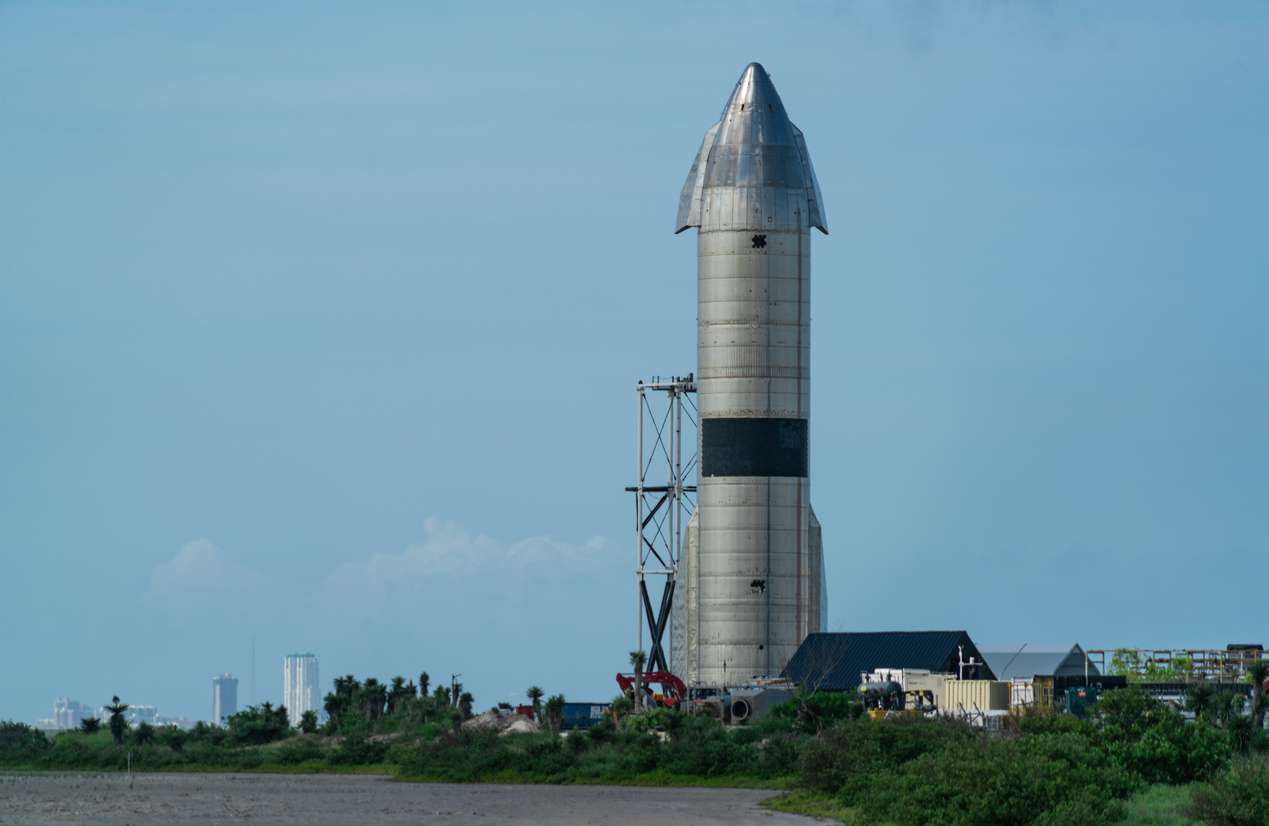For many, the upcoming launch of NASA’s Artemis 1 (after a botched attempt earlier this week) undoubtedly seems the start of a new and exciting era in space exploration. Not only is the US finally planning to return to the Moon — this time to build a permanent outpost on the lunar surface — but in just a few months Elon Musk’s SpaceX will be sending its gigantic Starship, theoretically capable of carrying 100 astronauts, into Earth orbit.
“Space is sexy again,” as astrophysicist Paul M. Sutter recently put it. “After the excitement of the initial Apollo missions dwindled into a subject only discussed by ultra-nerds, and the cool factor of the Space Shuttle gave way to the realization that it didn’t really do much, people generally lost interest in space.” But now, he says, “we’re back at it again!”
Yet the Artemis and Starship programs also represent very different approaches to space development. To lift its Orion passenger capsule on its way to the Moon, Artemis relies on a rocket called the Space Launch System (SLS), which, despite modifications, is an upgrade of the technology used to launch NASA’s retired Space Shuttle and therefore not designed for reuse. In other words, with each successive mission, the core stage and flanking boosters are expected to fall permanently into the ocean.
On the other hand, both SpaceX’s Starship and its Super Heavy booster are constructed to be completely and rapidly reusable. Once the booster has pushed the Starship into orbit, it returns to Earth by making a vertical, propulsive landing. The Starship itself then goes on to whatever its alien destination, touches down vertically under its own power, and eventually takes back off to Earth without the need for any additional landing craft or ascent vehicles.
The technological differences between Artemis and Starship are no accident. They reflect a deep and longstanding conflict within the space community: whether America’s next goal in space should be a permanent human presence on the Moon or a settlement much further away on Mars.
Those who support the Artemis program readily concede that SpaceX’s more powerful and economical Super Heavy booster could render NASA’s more traditional SLS rocket obsolete the moment Starship becomes operational. But for this faction, which is more closely aligned with the political and environmental goals of the government, anything that get Americans back to the Moon is a plus.
Those rooting hardest for the Starship, on the other hand, could easily do without Artemis and want to focus instead on sending as many people-packed vehicles as possible to Mars every 26 months (the time it takes for the orbits of Earth and the red planet to allow relatively short transits). As Musk himself has said, Starship “is the fastest path to a self-sustaining city on Mars.”
What makes the conflict between the Moon and Mars enthusiasts so difficult to resolve is the lack of room for compromise. For while those who favor the Moon like to portray it as a useful stepping stone to the red planet, anyone familiar with space technology knows that the means for settling each are unique.
As space journalist David W. Brown has noted, “The tools necessary to do anything useful in the two environments are very different and require, for the most part, very different technologies – including, crucially, an entirely different landing vehicle to navigate the Martian atmosphere.” The time needed to settle either world means that whichever one goes second could be put off indefinitely thanks to anything from a financial crisis to a great power showdown over Taiwan.
Even more difficult to resolve are the radically different priorities of Moon and Mars enthusiasts, stemming less from any scientific training than from personal philosophies about human needs and human nature. Moon enthusiasts know that our lunar neighbor’s airless environment lacks sufficient resources for any colony to ever be independent of Earth, even for the most basic things. They tend to see any Moon settlement as a relatively compact base for defense-related activities, such as operating antennas and telescopes to monitor geopolitical adversaries on and above Earth.
Many Moon boosters also believe they have a plausible environmental case, one that has been made ever since Apollo 17 astronaut Harrison Schmitt discovered that its surface is saturated with helium 3, a rare element on Earth. Mined by astronauts and transported back to Earth, helium 3 could theoretically provide the world with the only known nuclear fuel that produces no radioactive waste.
Mars enthusiasts, on the other hand, see enough resources locked in its red soil that it could actually be remade — or “terraformed” — into the kind of habitable world it likely once was. They argue, for example, that iron near the planet’s surface could be combined with atmospheric carbon to make steel. Similarly, abundant deposits of silicon could be used to construct solar panels. Using data from reconnaissance satellites and robot rovers, Mars boosters have calculated that heating underground ice could cover much of the planet in up to 115 feet of life-sustaining water.
For this faction, settling Mars would at the very least provide humanity with an effective backup plan in the event of a global catastrophe, such as a pandemic worse than Covid or a nuclear war. It could “preserve the light of consciousness,” as Elon Musk likes to put it. In addition, Mars enthusiasts argue, future generations would benefit from being able to tackle the same kind of rejuvenating challenges that early American pioneers faced as they headed West. “Mars has what it takes [to keep humanity vital],” says Mars Society founder Robert Zubrin. “It’s far enough away to free its colonists from intellectual and cultural domination by the Old World, and unlike the Moon, rich enough in resources to give birth to a new branch of civilization.”
Some Mars boosters even see a spiritual benefit — a chance to reverse the centuries-long decline in mankind’s view of its importance to the larger universe, which has gone from seeing itself at the very center of God’s creation to inhabiting a mere speck in the outskirts of the Milky Way. Successfully colonizing Mars would suggest a universe far more hospitable to humanity’s presence than most now imagine, inviting people to think of other worlds not as immutably hostile realms but as environmental puzzles that our minds have the ability to solve.
As the great historian Thomas Kuhn observed in his classic book The Structure of Scientific Revolutions, humanity’s technological progress may appear to advance in a straight line, but the values and motives of those who make it are remarkably diverse and often in conflict. Our future in space will be decided not by any logical argument, but by which faction has the greater resolve: those who want to settle the Moon first or those who want to go straight for Mars.





